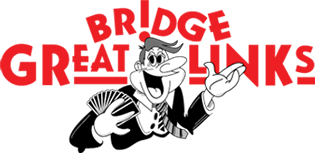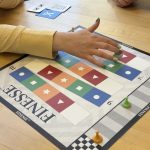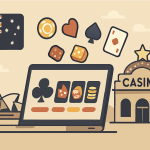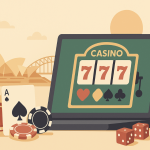Strategic thinking, a vital skill across disciplines, is masterfully embodied in the game of bridge. By emphasizing planning, adaptability, communication, and risk management, bridge offers valuable lessons applicable to games like poker, professional challenges, and even personal decision-making.
Strategic Thinking Across Games: Lessons from Bridge

Strategic Thinking Across Games: Lessons from Bridge
Strategic thinking is a skill that transcends boundaries, from the boardroom to the gaming table. Among the numerous games that hone strategic acumen, the game of bridge stands out as a masterclass in planning, adaptability, and cooperation. Which lessons from bridge can be applied to other games and real-life situations, offering insights into strategic thinking’s universal principles?
Communication and Collaboration: Bridge vs. Poker
A major distinction between bridge and poker lies in communication and collaboration. Bridge emphasizes partnership and subtle communication, while poker is a game of individual prowess and calculated deception. These differences highlight contrasting aspects of strategic thinking.
In bridge, players rely on bidding systems and carding signals to convey critical information. Pre-agreed conventions allow partners to communicate the strength and distribution of their hands. For example, a bid of “two hearts” might indicate a certain point range and suit length. During play, specific cards are played to signal interest in a suit or defensive priorities. This silent communication ensures that partners remain coordinated without revealing too much to opponents.
Poker, on the other hand, is a game of reading opponents and maintaining secrecy. Players use bluffing to create a false narrative about their hand strength and observe tells such as subtle physical or behavioral cues to gain insights into their opponents.
Although this is a bit harder to do when playing online, there are still players who can use psychology to gain an edge when playing on a renowned poker site with large player pools which adds to the excitement. While bridge fosters cooperation, poker rewards the ability to outwit adversaries. Yet both games require adaptability, information processing, and psychological insight, underscoring the universality of strategic principles.
The Fundamentals of Strategic Thinking in Bridge
Bridge is a card game played by four players divided into two partnerships. While the basic rules are easy to understand, the game’s strategic depth is extraordinary. Excelling at bridge requires players to master several key skills that serve as the foundation of strategic thinking. These skills include analyzing information, planning ahead, adapting to new developments, and communicating effectively with partners. Together, they form a framework that transcends the game itself and applies to numerous real-world situations.
One of the main challenges in bridge is the incomplete information available to players. Each hand begins with only the cards in your hand and the bidding process as clues. Success relies on your ability to infer your opponents’ and partner’s cards by interpreting their bids and gameplay. This process involves:
- Analyzing the Bidding: Bidding provides valuable information about the distribution and strength of all four hands, requiring players to decipher their partner’s intentions and holdings while at the same time gaining an understanding of what the opponents are holding.
- Anticipating Future Moves: Plotting several moves ahead is essential, accounting for how the play will unfold and how opponents might react.
- Adjusting to New Information: As cards are revealed during play, strategies must evolve to align with the changing landscape. Players start with an idea of the distributions around the table, but these assumptions change as each card is played
- Communicating Non-Verbally: Effective partnerships rely on carding signals through card play and adherence to pre-agreed conventions during both the bidding and play.
These principles are not only critical for bridge but also universally relevant. Whether navigating a business challenge, solving a complex problem, or managing a team project, the skills honed through bridge—analyzing data, planning strategically, and adapting on the fly—equip players to excel in virtually any strategic setting.
Lessons from Bridge: Thinking Several Moves Ahead
Planning begins even before the first card is played. Declarers, who lead the effort to fulfill their partnership’s bid, must think through how to achieve their goals. This involves calculating how many tricks they can confidently win, identifying potential threats from opponents, and determining the optimal sequence of play.
The score too plays a big part in player decisions. For example, a player may realize their trick-taking potential is not great, but at the same time, their score for not making a contract could be better than their score if they allow the opponents to make their contract.
These decisions, many of which happen before the first card is played, require a balance between immediate gains and long-term positioning.
This concept of thinking ahead is mirrored in many other areas. Chess players, for example, must visualize multiple moves in advance while anticipating their opponent’s responses. Business strategists similarly plot their course while accounting for competitor actions and market dynamics.
The Role of Risk Management in Strategy
Bridge players must navigate uncertainty, as the cards held by opponents are initially unknown. This makes risk management an integral part of the game. During both the bidding phase and the play, players calculate odds and make decisions based on probabilities, balancing aggression and caution.
For instance, overbidding can lead to penalties, while underbidding may result in missed opportunities. On the other hand, overbidding might disrupt the opponents enough that they miss their optimal spot.
Players also weigh probabilities when deciding how to play the cards. An understanding of hand patterns and the odds will help with risk management.
The lessons from bridge’s approach to risk management are widely applicable. In finance, portfolio diversification mirrors bridge’s strategy of minimizing risk by balancing options. Negotiations, whether in business or personal matters, often require assessing the risk of pushing too hard versus securing a deal. Even everyday decisions, such as planning a vacation or pursuing a goal, benefit from evaluating risks and potential rewards. Bridge teaches the importance of calculated risks and strategic restraint.
Building Resilience: Learning from Failures in Bridge
Mistakes are inevitable in bridge, as they are in life and other games. Each misstep offers a learning opportunity, and the best players view errors as stepping stones to improvement. Recovering from mistakes in bridge involves analyzing what went wrong, identifying patterns to avoid repeating errors, refocusing on the next deal and not allowing emotions to derail ons game. This resilience is a hallmark of successful strategists.
The ability to learn from failure is crucial in many domains. For example, athletes review game footage to identify areas for improvement, just like bridge players analyze hands. Professionals who adapt to setbacks and refine their approaches are more likely to thrive in competitive environments. Even personal growth often depends on viewing failures as opportunities to develop new skills or perspectives. Bridge’s emphasis on resilience teaches players to stay focused and grow through challenges.
Why Bridge Stands Out Among Strategic Games
Many games develop strategic thinking, but bridge offers unique advantages. Unlike chess or Go, where the entire board state is visible, bridge involves navigating hidden information. This adds an extra layer of complexity, as players must make decisions based on incomplete data. Additionally, the necessity of partnership dynamics sets bridge apart from most games. Success requires not only individual skills but also the ability to collaborate and trust a partner.
Practical Tips for Applying Bridge Lessons
The strategic lessons of bridge extend far beyond the card table. For those looking to harness these insights, consider the following approaches:
- Practice visualization by thinking through multiple scenarios before making decisions. Whether planning a project or preparing for a negotiation, envisioning potential outcomes can help refine your strategy.
- Embrace feedback and learn from mistakes. Analyzing what went wrong and making adjustments will improve future performance, whether in games or professional endeavors.
- Develop clear and effective communication skills. Whether collaborating with a bridge partner or working in a team, the ability to convey information succinctly and accurately is invaluable.
- Understand probabilities and use them to guide decision-making. Familiarity with odds enhances your ability to weigh risks and rewards in any context.
- Stay flexible and adapt to new information. The ability to pivot when circumstances change is a hallmark of successful strategists.
The Universal Value of Strategic Thinking
Bridge’s unique combination of complexity and partnership dynamics sets it apart from other strategic games. By mastering skills like interpreting incomplete information, collaborating effectively, and planning several steps ahead, players develop a competitive edge that transcends the card table. These abilities translate seamlessly into diverse domains, from navigating business challenges to excelling in team-based environments.
Bridge is more than a card game; it’s a microcosm of strategic thinking. Its lessons, planning ahead, managing risk, fostering collaboration, and learning from failure, apply to countless other games and real-world challenges. Whether you’re negotiating a business deal, making a critical life decision, or playing a high-stakes poker game, bridge-inspired strategies can guide you toward success. Embracing the principles of bridge offers not just better gameplay but a framework for thinking strategically in every aspect of life.








